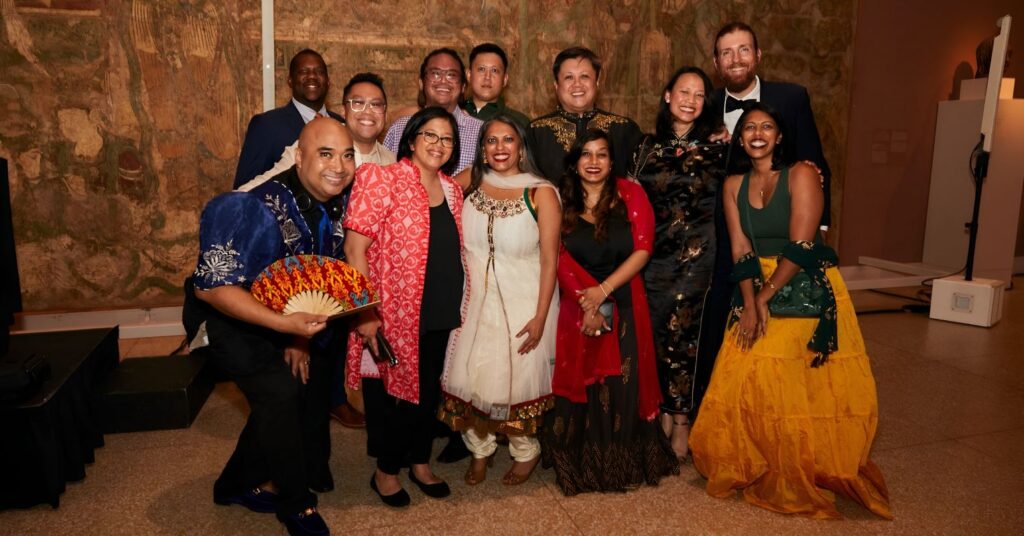As we wrap up May, I find myself reflecting on two significant observances this month that resonate deeply with me as a Filipino American psychologist: Asian American and Pacific Islander (AAPI) Heritage Month and Mental Health Awareness Month. One observance celebrates the vital contributions of our community to U.S. history and culture, while the other emphasizes the importance of prioritizing mental health, reducing stigma, and advocating for access to care. Combined, these commemorations present a powerful platform for discussing mental health within AAPI communities, particularly as many of us carry the weight of histories marked by colonialism, war, genocide, displacement, and systemic racism.
The Current Landscape of AAPI Mental Health
The journey of Asian American psychology began over 50 years ago with the establishment of the Asian American Psychological Association in 1972. Initial studies focused on cultural identity, family dynamics, and barriers to mental health care. Over the years, researchers have broadened their scope to address issues such as racial discrimination, mental health stigma, the model minority myth, and the need for culturally competent therapy. Today, the field has expanded to include topics like racial trauma, anti-Asian hate, microaggressions, and mental health issues including depression, anxiety, substance use disorders, and suicidality.
In contrast, mental health issues among Pacific Islanders still require more attention in psychological research, although awareness is gradually increasing. Research reveals how colonialism, U.S. military presence, forced migration, and environmental degradation have negatively impacted the mental wellness of Pacific Island indigenous communities. Critical issues include elevated rates of depression, substance use, and suicide, alongside a pronounced lack of access to culturally appropriate care.
Underutilization of Mental Health Services in AAPI Communities
A notable trend over the past several decades is the underutilization of mental health services by both Asian Americans and Pacific Islanders, ranking them lower than any other racial or ethnic group. As of 2023, the Substance Abuse and Mental Health Services Administration (SAMHSA) reported that Asian American adults are 50 percent less likely to seek mental health treatment compared to their white counterparts. In 2020, Native Hawaiians and Pacific Islanders were found to be the least likely racial/ethnic group to receive mental health care, with Asian Americans not far behind. Even those with severe mental illnesses in these communities frequently avoid treatment due to barriers like stigma, language obstacles, lack of culturally sensitive providers, and mistrust of the healthcare system.
The Hidden Crisis of Suicide in AAPI Youth
Despite some national statistics indicating lower rates of mental illness among AAPIs, significant disparities persist. According to the CDC, suicide was the leading cause of death among AAPI youth aged 15 to 24 in 2022. That year, the suicide rate for Native Hawaiian and Pacific Islander men stood at 22.1 per 100,000, surpassing rates among Black (14.6), Hispanic (12.8), and Asian (9.9) male populations, while only trailing behind white (28.0) and American Indian/Alaska Native (42.6) males.
Disparities Among Ethnic Groups
Differences among ethnic groups also significantly influence mental health outcomes. An integrative review of 26 studies found that PTSD rates among Southeast Asian American refugees varied from 45 percent to 86 percent, and depression rates ranged from 20 percent to 80 percent. Another research effort examining Asian Americans post-9/11 indicated higher chronic PTSD levels than in white Americans, particularly among immigrants and those with lower incomes or preexisting mental health conditions. Among South Asian Americans, women reported higher lifetime anxiety disorders compared to men, with many expressing mental distress through physical symptoms rather than via emotional language. Filipino Americans often experience high rates of depression, characterized by a cultural tendency to mask suffering with a smile.
Understanding Intersectionality in AAPI Mental Health
To effectively address AAPI mental health, understanding intersectionality is crucial. Coined by legal scholar Kimberlé Crenshaw, intersectionality analyzes how different systems of oppression—such as racism, sexism, heterosexism, and xenophobia—intersect to shape individual experiences. Within AAPI communities, identities are layered and multifaceted. For example, queer and trans AAPIs often confront family rejection and discrimination in LGBTQ+ spaces, leading to feelings of shame and isolation. Women may grapple with strict gender roles, body image issues, and silence surrounding sexual violence. Furthermore, darker-skinned AAPIs and mixed-race Black Asian Americans often encounter additional forms of discrimination and colorism within their own communities.
Towards Collective Liberation and Advocacy
AAPI communities need to adopt multifaceted strategies for advocating for mental health awareness and dismantling harmful systems. At the individual level, we should normalize conversations about mental health within our families, schools, places of worship, and community spaces. This involves modeling vulnerability, acknowledging trauma, normalizing therapy, and rejecting the silence many of us have inherited. Integrating healing practices that reflect our cultural traditions—such as storytelling, collective care, and ancestral rituals—with conventional therapeutic approaches is essential.
Mental health professionals, educators, and institutions must take actionable steps as well. This includes increasing the number of AAPI therapists, focusing on cultural humility, and embedding anti-racism within every layer of care. Services should prioritize being multilingual, trauma-informed, and rooted in community wisdom. Schools should provide mental health resources that affirm racial, gender, and sexual identities, avoiding pathologization.
In terms of policy, disaggregated data by ethnicity, language, and gender identity is vital for understanding and addressing disparities. Funding for culturally specific prevention programs and trauma-informed services geared toward immigrants, refugees, and marginalized groups is also essential. Healing is not merely a personal journey; it is inherently political. When AAPI individuals see themselves in therapists, literature, or educational contexts, it fosters healing. Each apology from a parent for past wrongs and each discovery of true history for the younger generation contributes to this healing process. By breaking cycles of silence, advocating for justice, and fostering solidarity with other communities, we collectively move toward liberation.
Mental Health and Cultural Identity in AAPI Communities
Diving into the challenges faced by Asian American and Pacific Islander (AAPI) communities, two significant themes emerge: the rich cultural heritage and the urgent need for mental health awareness. These narratives offer profound insights into the unique experiences of AAPI individuals, highlighting the importance of addressing mental health disparities and embracing cultural identity.
The Importance of Mental Health Awareness
Throughout history, AAPI communities have navigated complex challenges, including colonialism and systemic discrimination. This background often fosters a silent struggle with mental health issues. Awareness is vital, specifically within these communities, to reduce stigma and encourage individuals to seek help. By prioritizing mental wellness, we can foster environments where open discussions about mental health are normalized.
Barriers to Mental Health Care
Despite being an essential aspect of overall wellness, AAPI individuals frequently utilize mental health services less than other racial and ethnic groups. Factors contributing to this include cultural stigma, language barriers, and a lack of culturally responsive providers. Addressing these barriers is crucial for improving mental health outcomes in AAPI populations, ensuring that everyone can access the care they need.
Understanding Historical Trauma
The legacy of historical trauma significantly impacts mental wellness in AAPI communities. High rates of depression and anxiety can be traced back to systemic issues such as racism and forced migration. By acknowledging this history, we can better understand the mental health landscape and highlight the need for culturally sensitive approaches to therapy and support.
Intersectionality in AAPI Experiences
Exploring mental health within AAPI communities requires an understanding of intersectionality. Individuals face multiple layers of oppression, including racism, sexism, and xenophobia. For queer and trans individuals within these communities, these layers can lead to unique stressors that exacerbate mental health challenges. Recognizing these complexities can help create tailored support systems that address the specific needs of diverse AAPI identities.
Promoting Cultural Healing Practices
Integrating cultural practices into mental health strategies can transform how AAPIs approach healing. Traditional methods such as storytelling, communal support, and faith-based practices should be recognized alongside contemporary therapeutic tools. By merging these practices, we can honor cultural heritage while promoting mental wellness in a holistic manner.
A Path Toward Collective Wellness
Collective action is vital for fostering mental health awareness in AAPI communities. By working to normalize mental health discussions in various settings—be it family gatherings, educational institutions, or community centers—we can build supportive networks that encourage individuals to seek help. Additionally, advocating for policies that provide targeted resources and culturally relevant services will pave the way for a more informed and healthier future for AAPI individuals.


